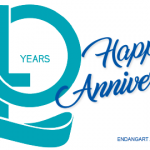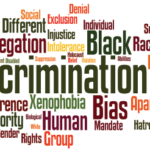 “I tell everyone who comes into her room now, ‘You will not disrespect my daughter again. No one will,’” recounts Sarah’s mother. “Every time a [provider] acts rude to her, Sarah tells me, ‘Ma, I’m used to it now,’ and I have to insist ‘No! Baby, you should never get used to that.’ … Dr. Chandler, we went to the hospital over and over again, and we never got the right help until she was almost dying. We went there, and she was not treated either time. No blood was taken, and there was no pain medication given. They said, ‘Follow up with dermatology for eczema.’ She had ulcerations down to the bone and was in a lot of pain. We sat up in that emergency department and begged to be admitted. They did nothing to address her pain. Nothing.”
“I tell everyone who comes into her room now, ‘You will not disrespect my daughter again. No one will,’” recounts Sarah’s mother. “Every time a [provider] acts rude to her, Sarah tells me, ‘Ma, I’m used to it now,’ and I have to insist ‘No! Baby, you should never get used to that.’ … Dr. Chandler, we went to the hospital over and over again, and we never got the right help until she was almost dying. We went there, and she was not treated either time. No blood was taken, and there was no pain medication given. They said, ‘Follow up with dermatology for eczema.’ She had ulcerations down to the bone and was in a lot of pain. We sat up in that emergency department and begged to be admitted. They did nothing to address her pain. Nothing.”
After nine months of symptoms, which included a 15 kg weight loss, progressive muscle weakness, arthralgias and skin lesions, 13-year-old Sarah presented to the outpatient rheumatology clinic unable to hold her neck up or stand. She had dysphasia with excessive pooling of saliva; a hoarse, barely audible voice; deep skin ulcerations; severe oral thrush; intestinal bleeding; and periorbital swelling.
Sarah was eventually diagnosed with anti-melanoma differentiation-associated gene 5 (MDA5) positive juvenile dermatomyositis (JDM), an inflammatory myopathy manifested by muscle inflammation, weakness, skin rashes and rapidly progressive, and often fatal, interstitial lung disease.1
Just six months earlier, Sarah was moving about in the fullness of her life, playing with fashion dolls and plotting mischievously with her twin brother. She and her twin are the youngest of seven children. Sarah’s mother hails from a line of clergy. Her maternal grandfather, with whom they share their dwelling space, is a pastor, as are several maternal aunts and uncles. Her paternal grandmother was a social worker and community activist in one of the city’s historically redlined neighborhoods (i.e., a discriminatory practice in which services—financial and otherwise—are withheld from potential customers who reside in neighborhoods classified as hazardous to investment).2-4 Her father has continued this legacy of service with a multi-decade-long career as an athletic director at a community center. Sarah’s parents were among the early cohorts of children in the 1970s to take part in public school busing programs.5
Racial concordance is a proxy for the degree to which patients & their unique circumstances are seen, heard & respected as fundamentally human.



